







With over 15 million people and 14,414 square miles of land, the North isn’t small.
To consider what improvements we need in the North, we have set out seven Strategic Development Corridors (SDCs) across our region. Each one has gaps in connectivity that need addressing, so we’re working with our 20 Local Transport Authorities to improve opportunities for people, businesses and our economy.
Each corridor represents an area where evidence suggests investment in transport infrastructure will enable transformational economic growth. Our proposals for improvements in the Strategic Development Corridors consider the needs of people and businesses, and align with local transport investment.
When goods, services, knowledge and skills move more freely, greater collaboration and transformational economic growth will follow. Future investment won’t just be concentrated in these corridors, but they represent where the greatest growth opportunities exist.
Transport for the North considers all types of transport investments together, including:
Our proposals for improvements in the corridors consider the needs of people and businesses from a regional perspective, while aligning with local transport investment.
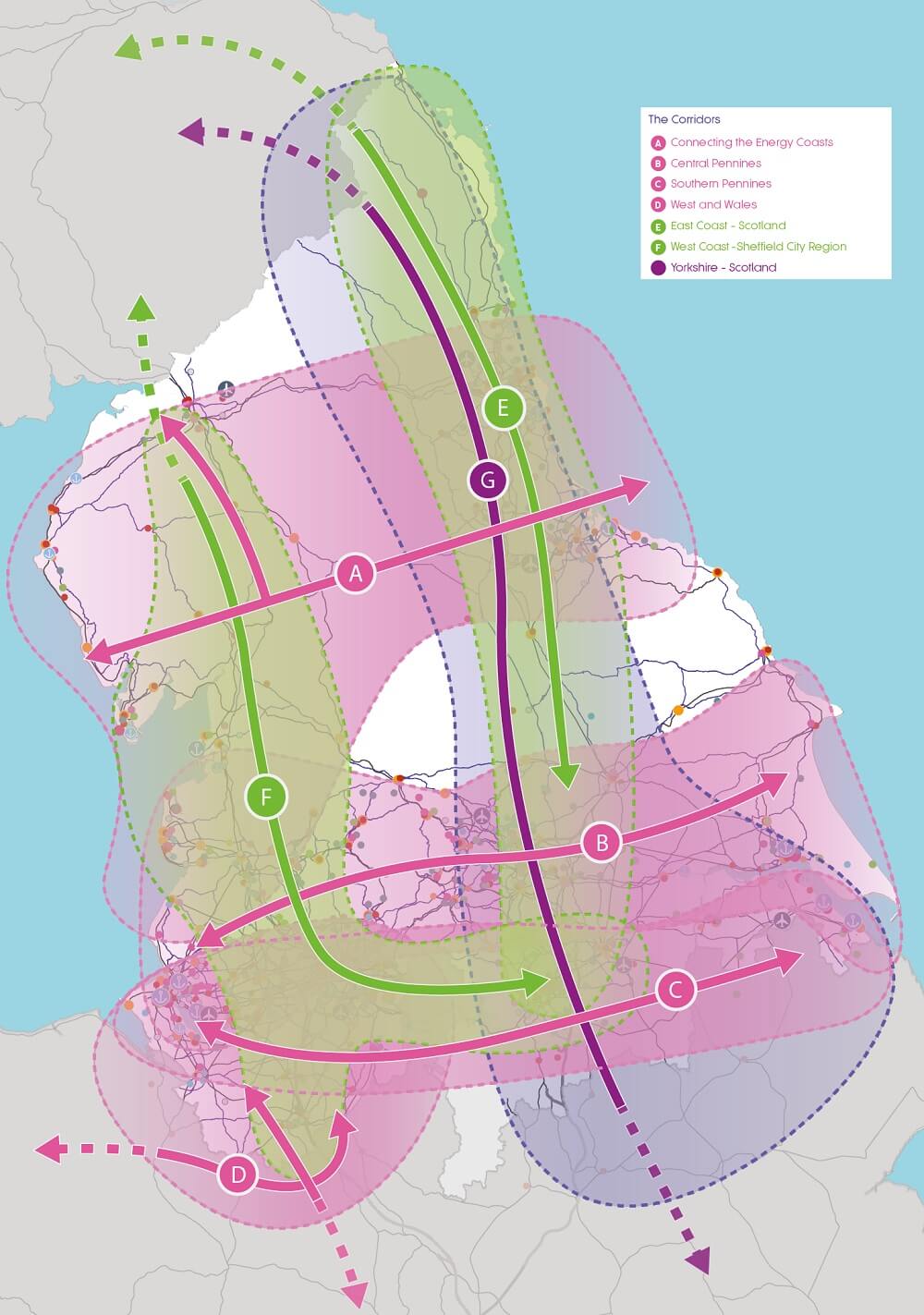
Click on the buttons below for more information on each corridor
A Connecting the Energy Coasts B Central Pennines C Southern Pennines D West and Wales E East Coast – Scotland F West Coast – Sheffield G Yorkshire – Scotland
The corridor links advanced manufacturing businesses and energy generation facilities located in the North East, Tees Valley, Lancashire and Cumbria.
Transport investment within this corridor could also unlock employment, supply chain and housing opportunities as part of the Government’s Industrial Strategy. Advanced manufacturing and energy industries in the corridor have attracted a significant amount of prospective investment. In Cumbria alone, there is more than £25bn of planned private sector investment over the next 10 years. Poor transport infrastructure is currently a key constraint to securing this potential investment. Improving transport links within this corridor would also support growth in the tourism and leisure industry.
Connecting the Energy Coasts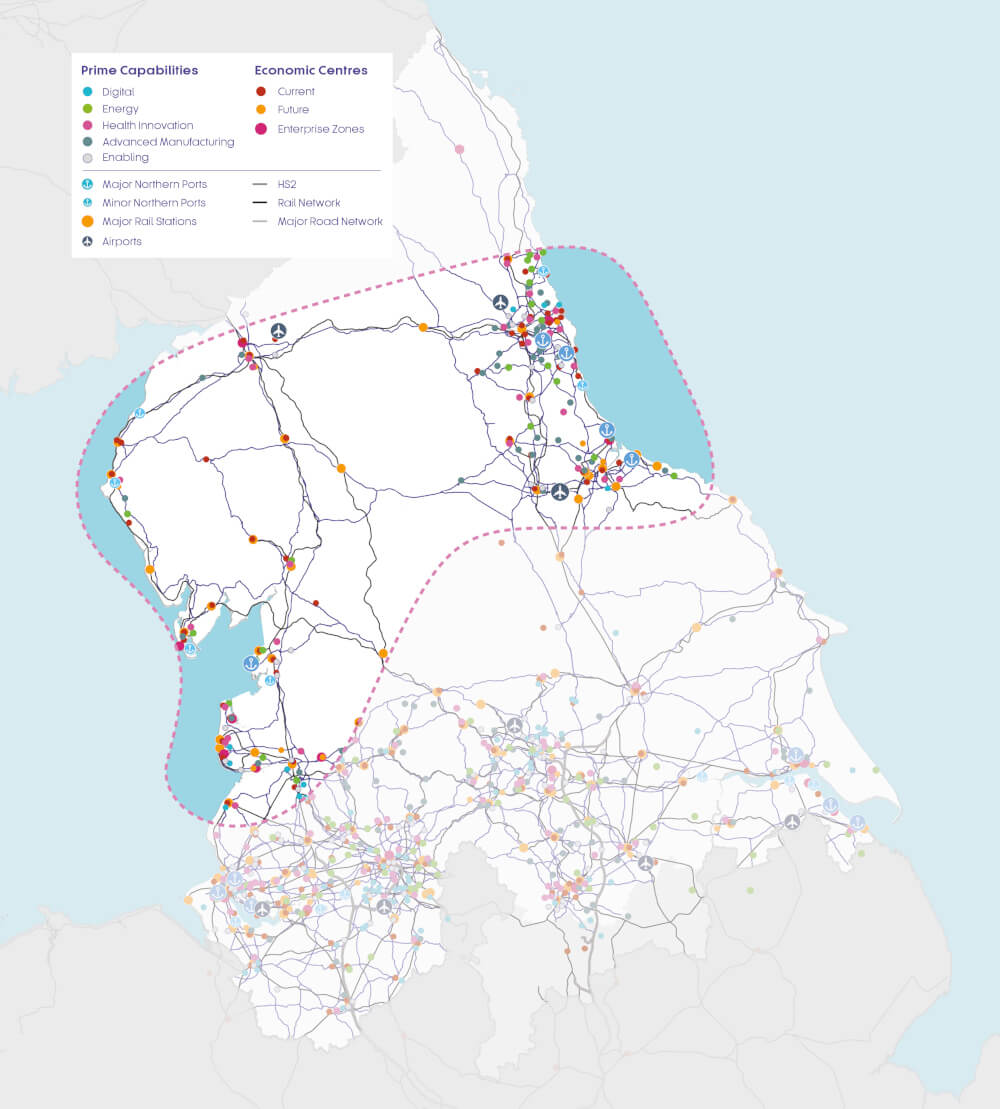
Our work on this corridor will look at the case for improving east-west connectivity in the corridor for some of the North’s important economic centres in North Yorkshire, West Yorkshire, Hull and the Humber, Greater Manchester, Lancashire and Liverpool, and the options for improving road, rail and waterborne capacity.
This corridor covers a major economic area of the North, home to global businesses, supply chains and economic assets. It contains the largest aerospace cluster in the UK, including BAE Systems and Rolls Royce, and has internationally competitive advantages in sectors such as automotive and other advanced manufacturing industries. Freight and logistics are important in this corridor, connecting the Port of Liverpool with ports on the Humber as well as the international airports at Leeds Bradford and Liverpool.
Improving transport connections would support economic growth and attract businesses and investment to the North, creating jobs and supporting the development of new housing.
Central Pennines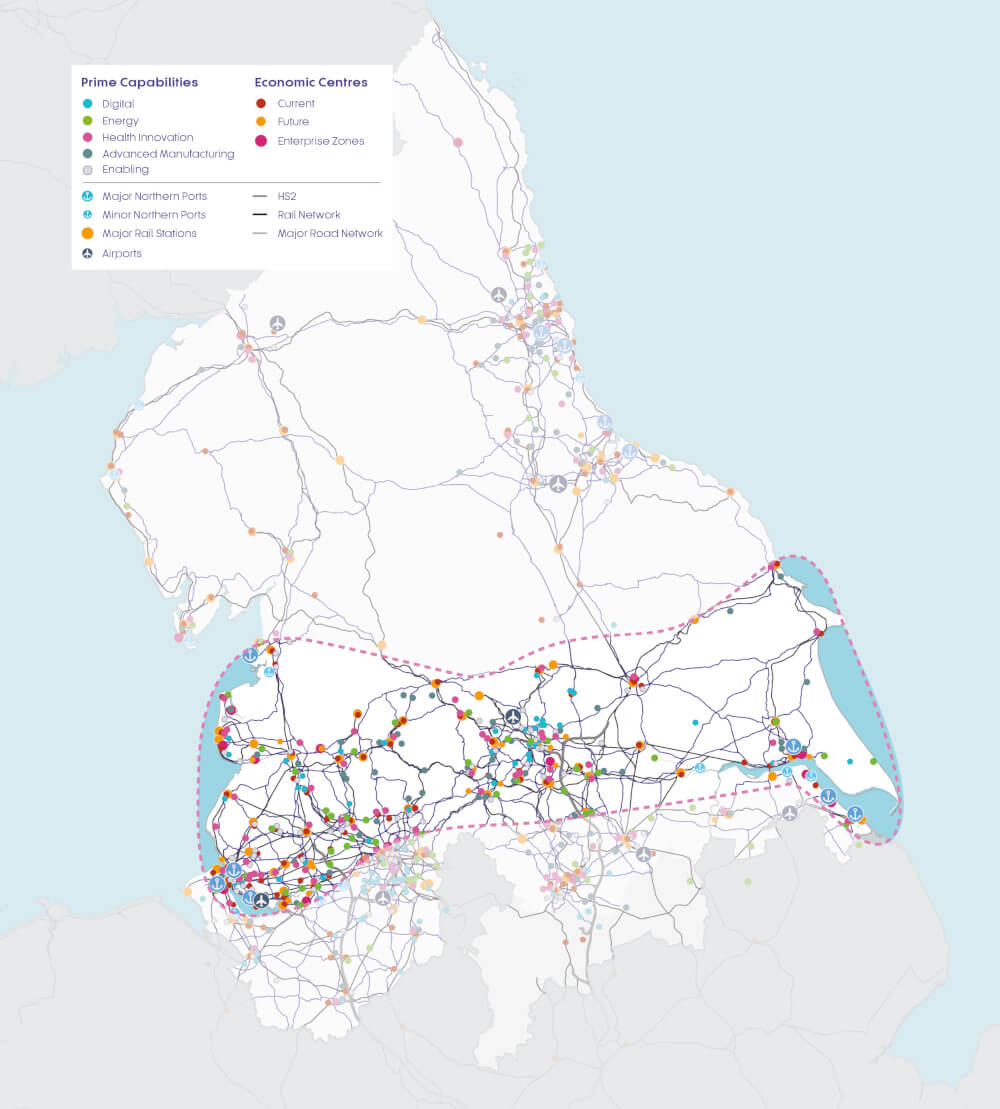
This corridor makes the case for improving east-west connectivity between some of the major economic and population centres of the North, including Liverpool, Warrington and Cheshire, Manchester, Sheffield and Hull, along with four major ports, and four airports.
Proposals include improving Trans-Pennine road and rail links between Sheffield and Manchester and providing better access to Doncaster Sheffield Airport and the ports in Liverpool and the Humber.
Southern Pennines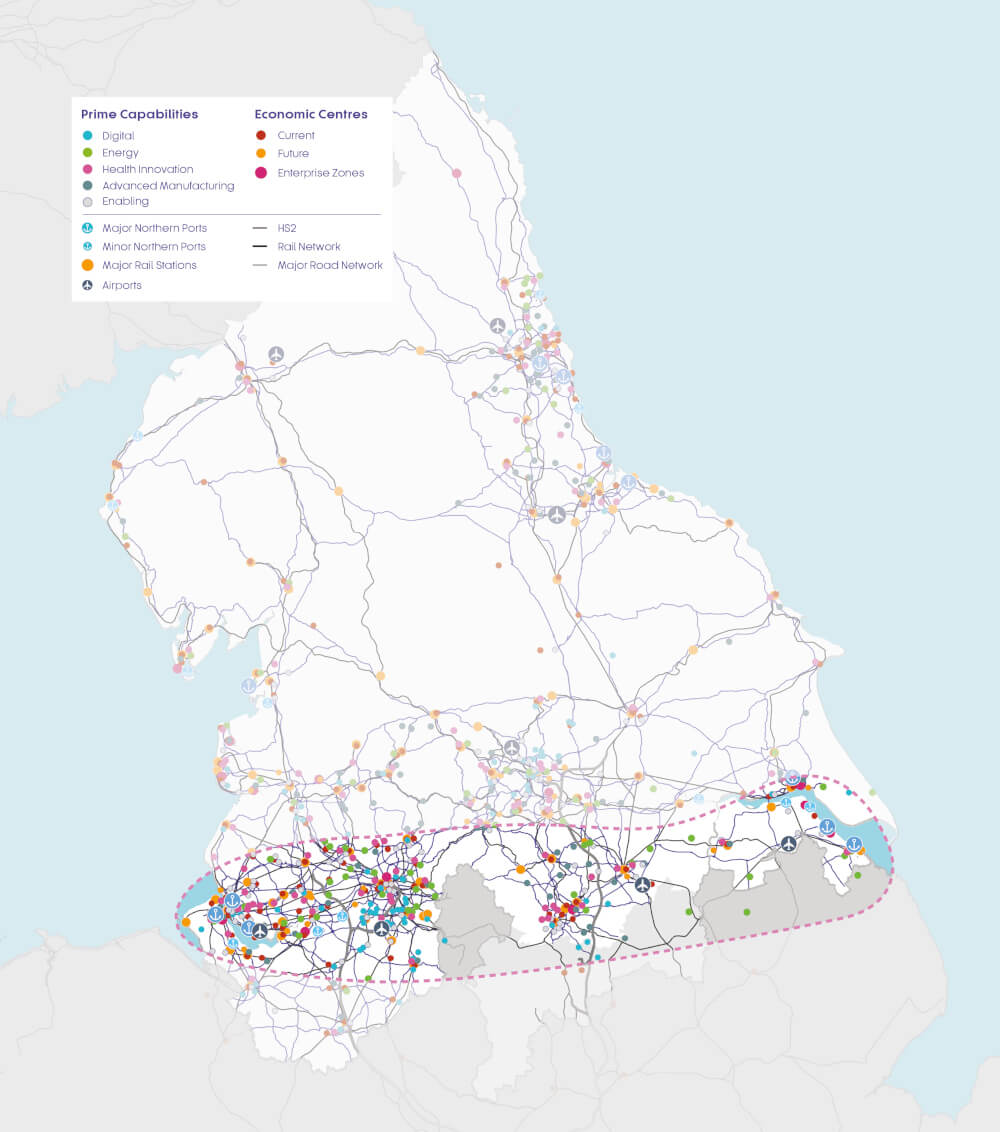
This corridor links densely populated economic centres and assets, including some of the North’s largest cities such as Liverpool and Manchester. Improvements in this corridor will also strengthen the North’s cross-border connections with North Wales and the Midlands.
Significant economic and population growth is forecast within this corridor which will increase demand on transport infrastructure. Connectivity improvements can support the growth of Manchester Airport, Liverpool John Lennon Airport, Cheshire Science Corridor Enterprise Zones, Atlantic Gateway, North Wales Arc, Port of Liverpool and Crewe HS2 Hub.
West and Wales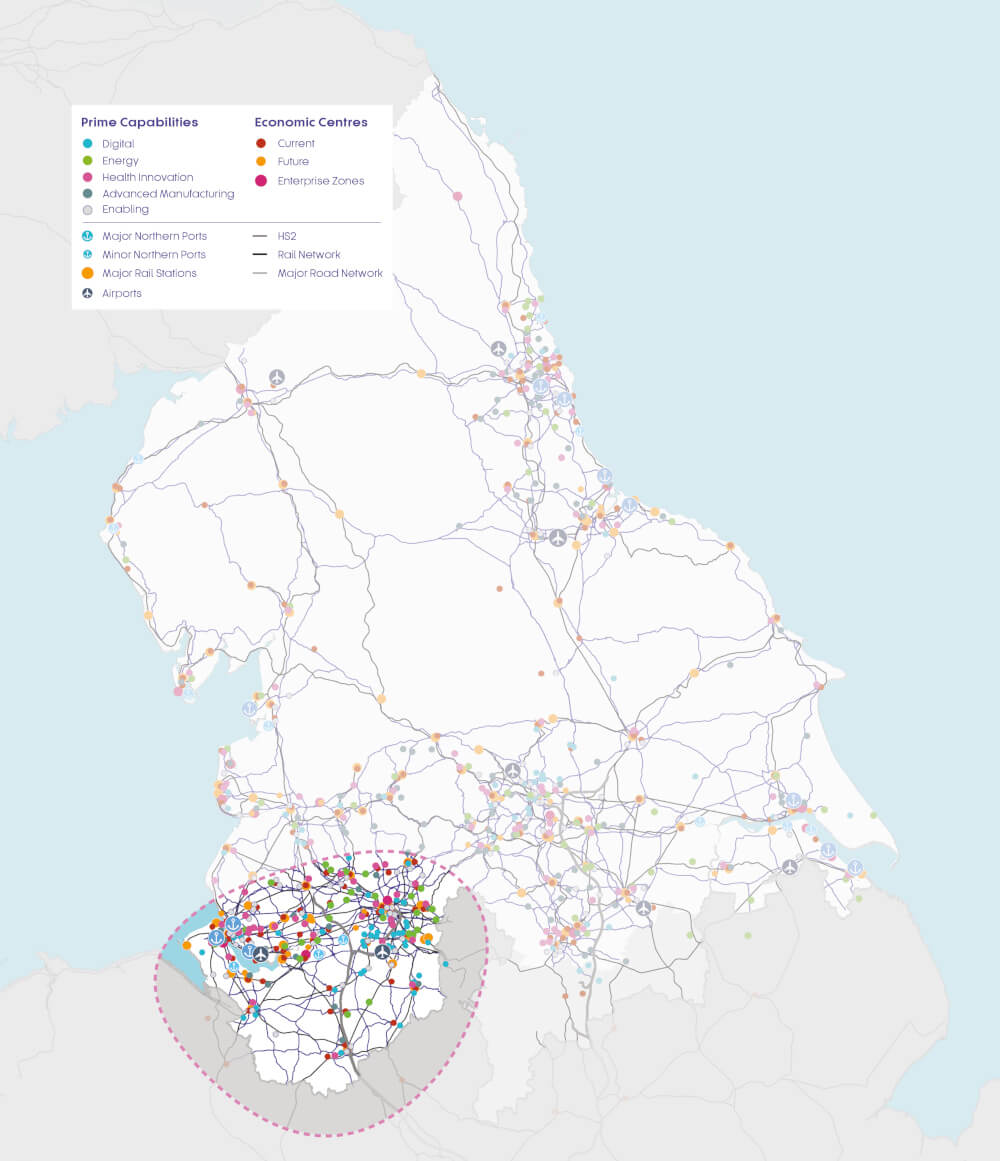
This study will build on work done by Network Rail to identify the requirements for current and future passenger, freight rail movements, and the consequent implications for the transport network within the broad area and encompassing links from the Midlands, through the North, and to Scotland. It will also strengthen and complement the Yorkshire to Scotland road corridor.
East coast – Scotland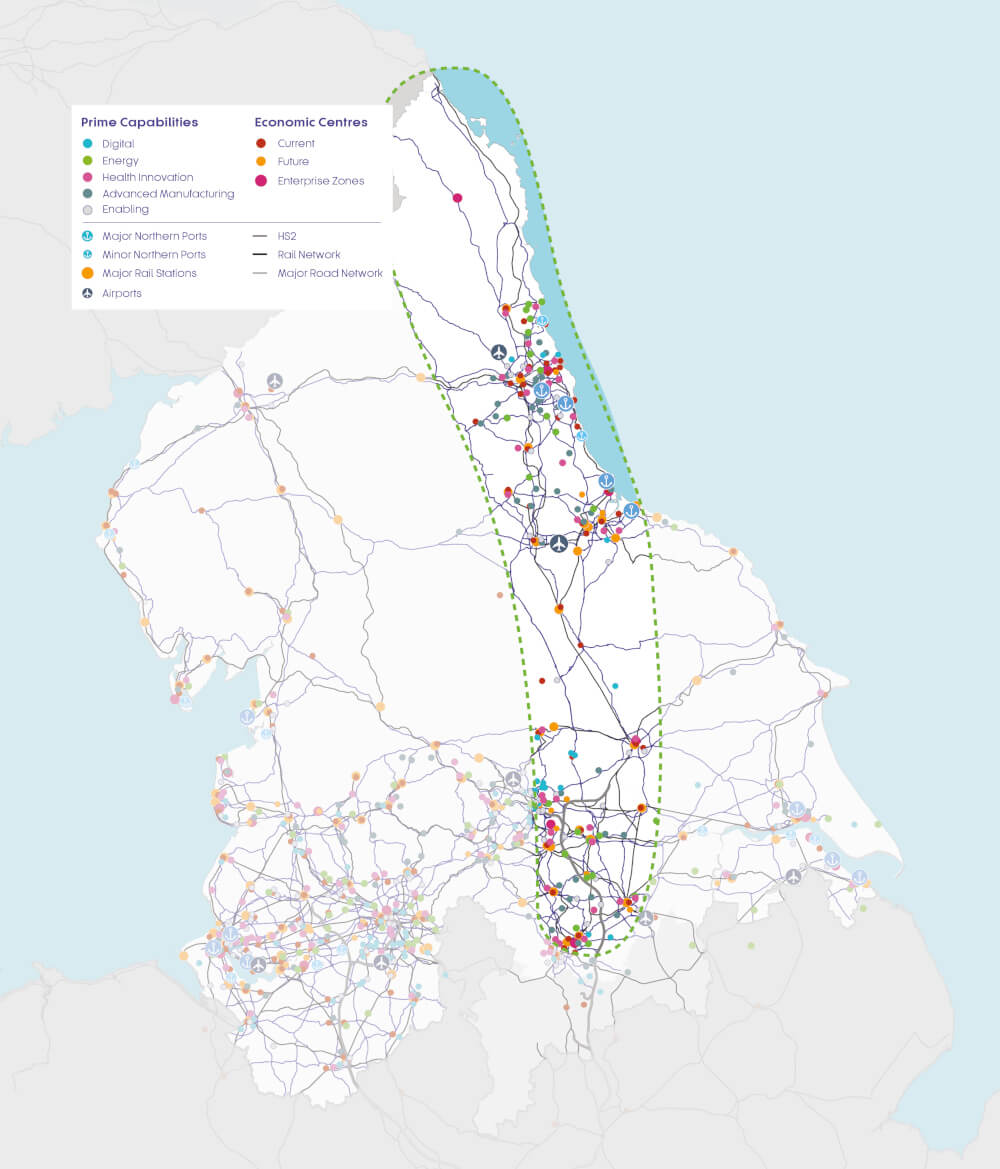
The corridor looks to strengthen the growing assets in advanced manufacturing, health technology, digital businesses, and research centres in the South Yorkshire Mayoral Combined Authority (formerly, Sheffield City Region) and those in Lancashire and Cumbria.
The potential economic links between the two areas are not served well by the existing rail network, and so this corridor needs to integrate with future high–speed rail connections as well as complement investments being pursued in road improvements in the North West and across the Pennines. There is also strong demand for growth on this corridor through to Scotland, for passengers and freight.
West Coast – Sheffield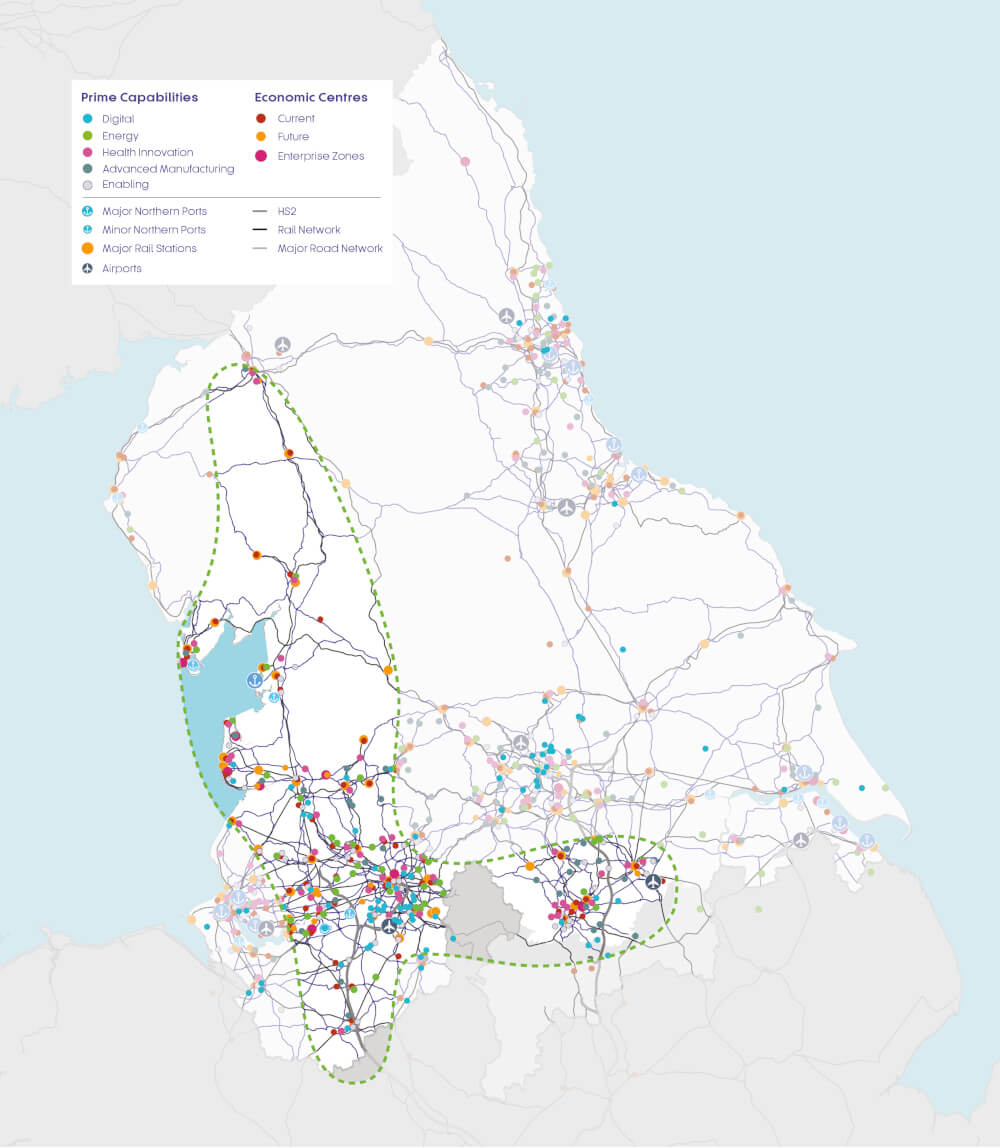
This corridor is looking at the case for strengthening road connectivity between the Midlands, Sheffield City Region, West Yorkshire, North Yorkshire, North and North-East Lincolnshire, East Riding, Hull and Humber, Tees Valley, the North East and Scotland to better connect the economic centres in this corridor. This will build on the existing road investment commitments and will integrate with the east-west focused Strategic Development Corridors. It will also strengthen and complement the East Coast Corridor to Scotland rail corridor.
Yorkshire – Scotland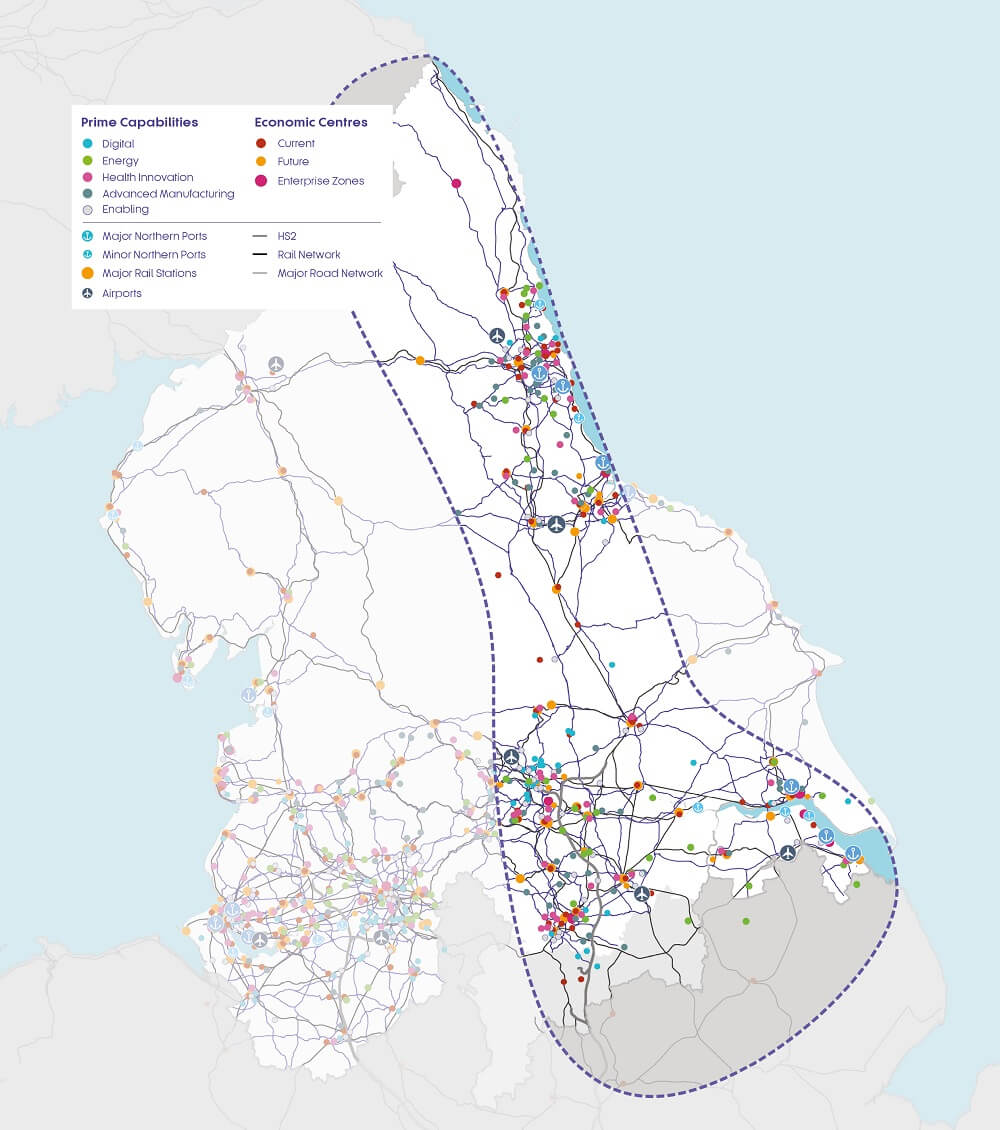
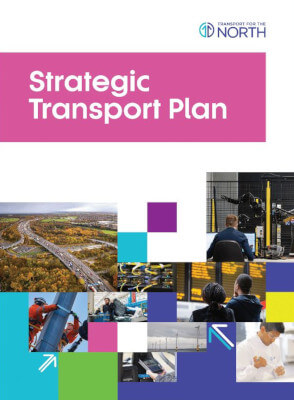
The first time the North has come together to outline the robust case for transformational transport investment across all of the North, to rebalance the UK economy
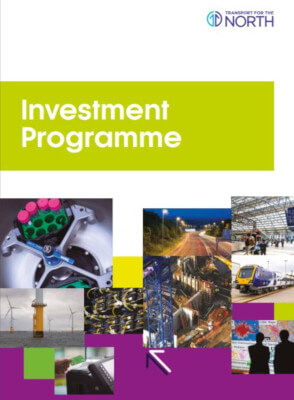
This outlines a pipeline of transport interventions to better connect the whole of the North, with a short, medium and long-term plan for investment.
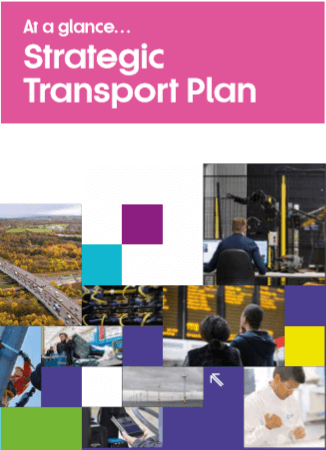
Setting out the key messages on the case for investment in transport and our work programmes

Key messages from the updated Major Roads Report which looks at the road networks across the North of England.

Long Term Rail Strategy Key Messages sets out Transport for the North’s vision for the ongoing transformation of the North's railway till 2050.

The updated report provides the baseline for understanding the North’s markets and travel patterns for road, rail, air, coastal shipping and inland waterway for freight.
CLOSE POPUP [X]